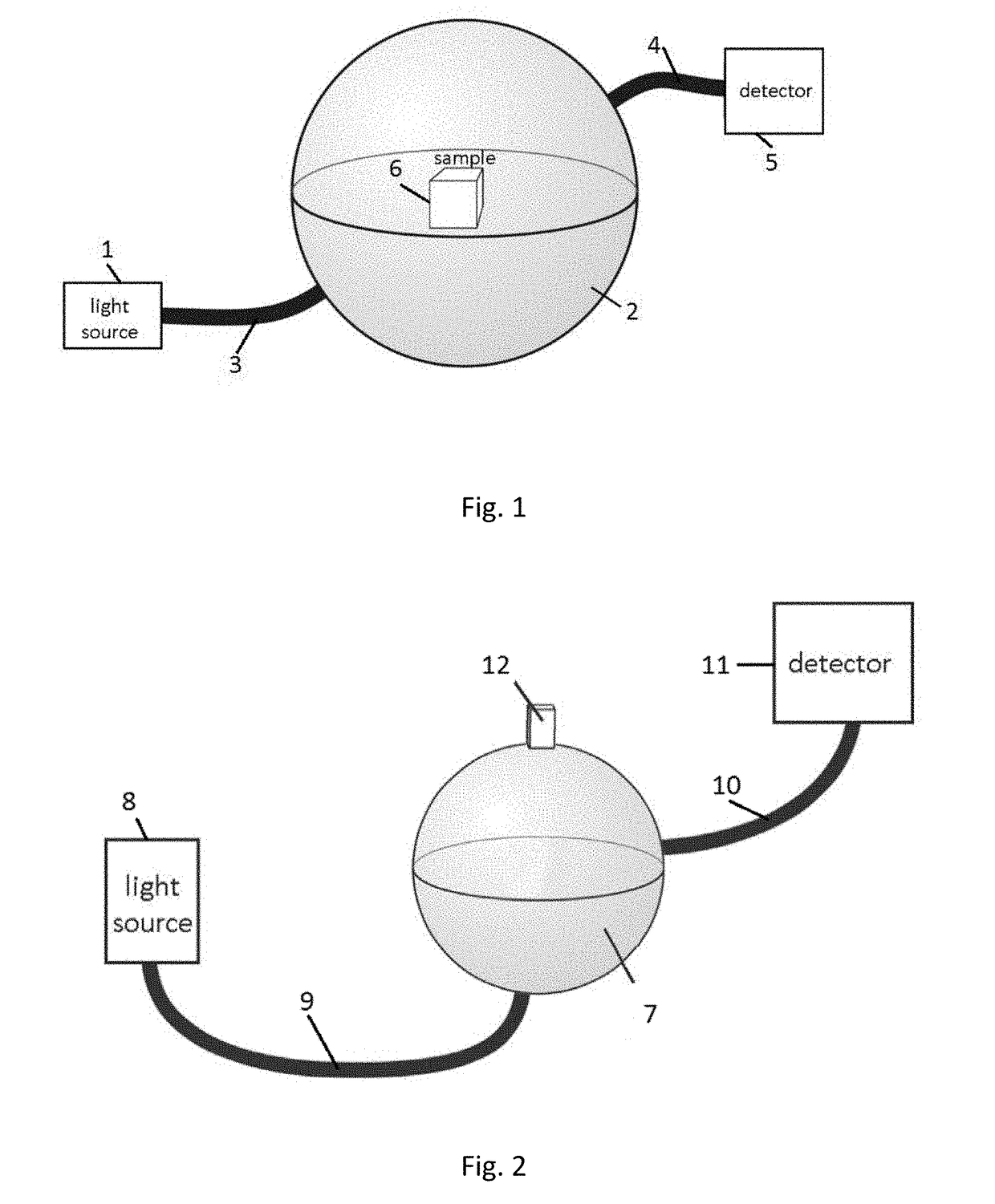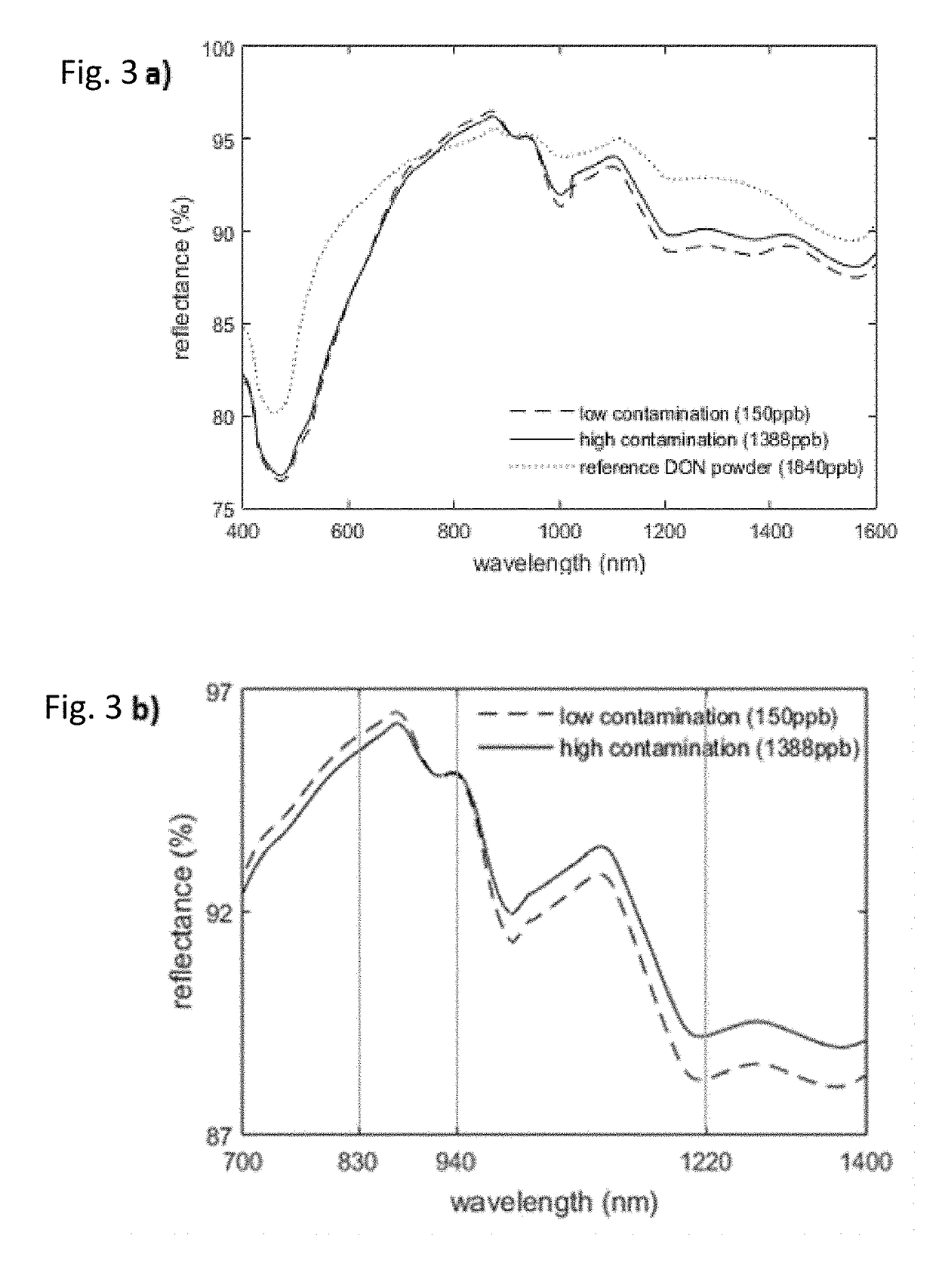A method and apparatus for the detection of the presence of mycotoxins in cereals
a technology of mycotoxins and methods, applied in the field of cereal contamination, can solve the problems of acute and chronic health effects, secondary metabolites of toxic fungi, and the presence of mycotoxins in agricultural commodities, and achieve the effects of increasing food safety, fast detection, and accurate and non-destructive detection
- Summary
- Abstract
- Description
- Claims
- Application Information
AI Technical Summary
Benefits of technology
Problems solved by technology
Method used
Image
Examples
Embodiment Construction
[0042]An apparatus for the detection of mycotoxins in cereals, in accordance with one embodiment of the invention, is shown in FIG. 1. The apparatus shown in FIG. 1 facilitates a two-stage measurement procedure. Both stages measure the diffuse-light absorption spectra, but use a different type of integrating sphere. The first stage uses a larger reflection integrating sphere, allowing a fast screening of a collection of cereal kernels, while the second stage uses a smaller reflection integrating sphere, enabling the measurement of individual kernels. For example the larger integrating sphere may have a diameter of 25 cm while the smaller integrating sphere may have a diameter of 6 cm. Other size combinations are of course possible.
[0043]The first-stage measurement setup is used to capture at least one diffuse-light absorption spectrum of a collection of cereal grains. The first stage in FIG. 1 consists of a supercontinuum light source 1, a larger reflection integrating sphere 2, opt...
PUM
| Property | Measurement | Unit |
|---|---|---|
| wavelength | aaaaa | aaaaa |
| diameter | aaaaa | aaaaa |
| diameter | aaaaa | aaaaa |
Abstract
Description
Claims
Application Information
 Login to View More
Login to View More - R&D
- Intellectual Property
- Life Sciences
- Materials
- Tech Scout
- Unparalleled Data Quality
- Higher Quality Content
- 60% Fewer Hallucinations
Browse by: Latest US Patents, China's latest patents, Technical Efficacy Thesaurus, Application Domain, Technology Topic, Popular Technical Reports.
© 2025 PatSnap. All rights reserved.Legal|Privacy policy|Modern Slavery Act Transparency Statement|Sitemap|About US| Contact US: help@patsnap.com



